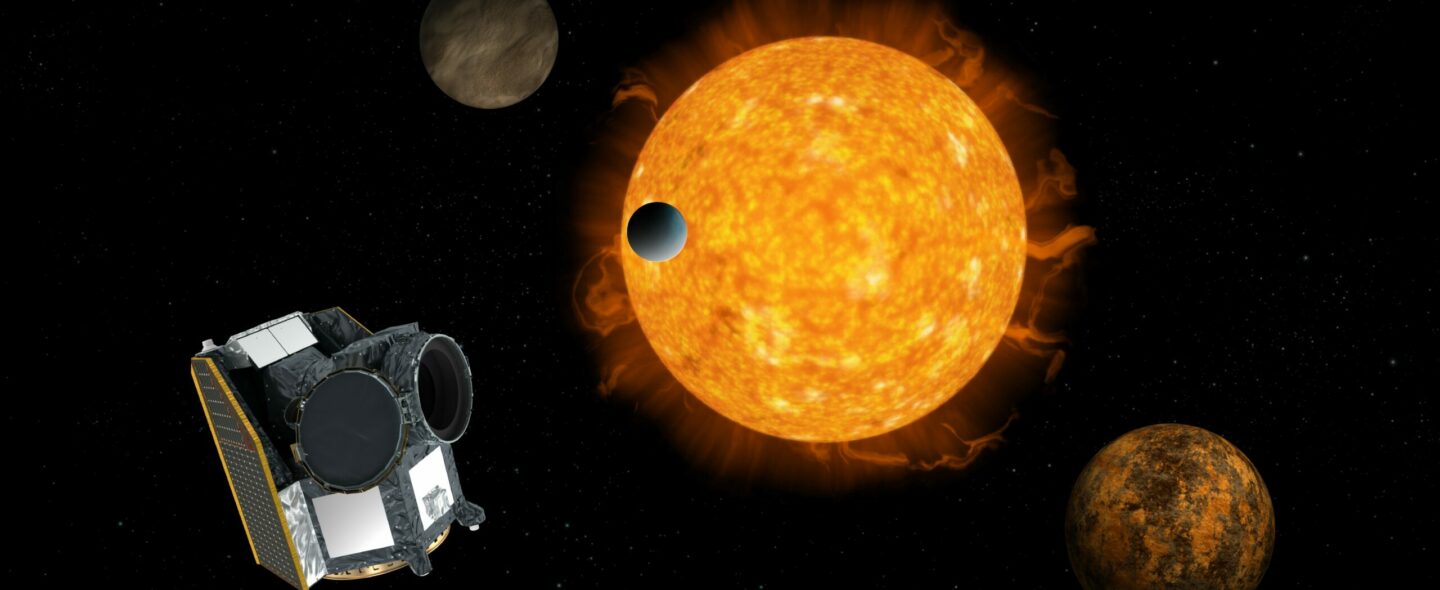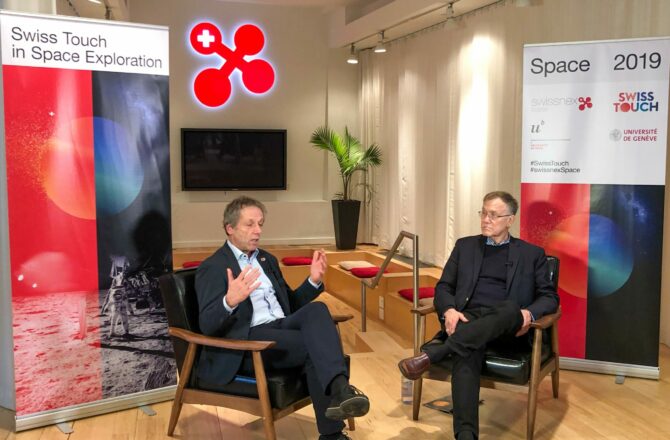Conjectures about the possibility of alien life sound indeed like an important aspect of exoplanetology. Is it why the idea of finding an Earth-like planet sounds so exciting?
George Ricker: Determining if a planet is Earth-like is the first indication that it might be a conceivable place for life as we know it to develop. To do it, you have to calculate its density. A rocky planet like the earth is five or six times denser than water, and that is the first key piece of information you need. In the near future, our main mission will be to find lots of planets similar to Earth in terms of density. Then the next generation of giant telescopes will allow systematic searches of atmospheres. To say if a planet is potentially habitable, you need to know its density and its atmosphere.
You need also to assess the possible presence of liquid water, which equals roughly to temperature. That is determined by the environment provided by the star. For the Earth to have liquid water, you need it to be approximately one astronomical unit away from the Sun. But stars like the Sun are fairly uncommon. In our neighborhood, 75% of stars are somewhat cooler and smaller. Around them, the zone of the ideal temperature for life is much closer. It is good news, since the closer a planet is from its star, the easier it is to detect.
Determining if a planet is earth-like is a first indication that it might be a conceivable place for life as we know it to develop — George Ricker.
The two first bits of information we need to characterize an exoplanet’s density are its size and mass. The star’s brightness reveals insights on its size and velocity on its mass. Can you explain how?
Willy Benz: Velocity is like when you watch a sailboat. You see it moving but you don’t see the actual wind. Yet, you know that there is wind, precisely because the sailboat is moving. The same thing happens with stars. When you see a star moving periodically, you can deduct that a planet is pulling it. The bigger the planet’s mass, the larger the pull. When it comes to the brightness, you measure the effect of the shadow of the planet when it passes in front of the star, blocking its light like the moon in a solar eclipse. In our case, it is just a tiny fraction of light that goes down, but this decrease allows us to measure the planet’s size.
When you see a star moving in a periodic manner, you can deduct that a planet is pulling it. The bigger the planet’s mass, the larger the pull — Willy Benz.
Earlier, we even mentioned the future possibility to analyze the atmosphere of exoplanets. How will we proceed?
Willy Benz: You need a light spectrum to know what the atmosphere of these planets is made of, what is their surface temperature if they have water. It is not surprising since everything we know about stars and galaxies also comes from spectroscopy. The next big infrastructures will precisely carry such type of instruments. The James Webb Space Telescope and later the giant ground-based telescopes will be able to measure the light spectrum of transiting planets. There are two types of light that you can measure from an exoplanet: the reflected light from the star, which is in the optical range, and the infrared thermal emission from the planet itself. The biggest challenge is the contrast. In the visible light, the contrast is a ten to the ninth. That is to say, there are a billion more photons directly coming from the star than reflected by the planet. In the infrared, it is a little better with only a million more photons emitted by the star. The challenge is to overcome the contrast to see the planet. You also need to have enough resolution to see a very faint object sitting very close to a bright star.
George Ricker: When a planet is actually transiting, you see a ring of light around the planet which is otherwise a dark dot on the surface of the star. That ring is transmitted light from the atmosphere, that we can measure with spectroscopic methods. That kind of measurement is more limited than what could be achieved if the signal from the star and the planet are completely separated. But we will probably have to wait 20 years before we can obtain a detailed separation of the planet’s light from that of its host star. For a more complete resolution of a planet’s surface features, there are a series of giant space telescopes currently contemplated, but that is going to come even later.
Coming back to the present, you have been leading the TESS mission. The satellite has already discovered more than 1400 objects of interest, and 29 so far have been formally confirmed as exoplanets. That is if my figures are up to date…
George Ricker: I just checked on the website this morning, the exact figure is 1424 objects of interest and 34 or 35 confirmed exoplanets. The reason for having such different numbers is that we need to follow up observations with radio velocity measurements, just like Willy was mentioning at the beginning of our interview. Ground astronomers are swamped with data from new TESS candidates, and it is going to be a lot of work for them. But a very large fraction of these 1424 objects will eventually be confirmed as planets.
What do you expect to learn from these objects?
George Ricker: The planets discovered by TESS are more promising than the bulk of 4000 objects discovered so far, most of them during the Kepler mission. They are typically associated with host stars 10 to 30 times closer than the ones from Kepler. That means that the relative brightness is 100 to 1000 times different, which makes the follow-up measurements of TESS-discovered systems much easier. For example, if you need a 10 meters telescope to carry out radial velocity measurements of a TESS object, a Kepler object would require a 100 meters telescope.
TESS has been operational for a year. Now we are about to launch CHEOPS, a Swiss-led ESA space telescope also devoted to exoplanet research. The two satellites have been described as complementary. I have even heard the newly coined term “CHESS” to describe a collaboration between your teams at MIT and the University of Bern. Can you tell us more about it?
George Ricker: Well, our missions are indeed very complementary. The idea behind TESS is to quickly scan the sky and look for interesting transiting systems. Only one quarter of a percent of the solid angle surrounding the solar system has really been explored so far. Most of the 4000 known exoplanets lie there. Within the range that we can expect to observe over the next decade, we are probably going to discover tens of thousands of planets. In the near term, these systems are going to require a follow-up with a larger space-borne detector. CHEOPS has a 10-times larger collecting area, and it can focus on the candidate planets. CHEOPS will also look for a longer time in slightly different parts of the sky. In this regard too TESS and CHEOPS are complementary.
TESS systems are going to require a follow-up with a larger space-borne detector. CHEOPS has a 10-times larger collecting area, and it can focus on the candidate planets — George Ricker.
Willy Benz: It’s just like bread and butter, they are better together. Now, we just have to fulfill our part of the deal and get CHEOPS up there safe and sound. Early next year we will know if everything functions well. Then we will start the scientific collaboration that we have been planning for a little while.
George Ricker: And then the fun begins.
Willy Benz: Yes, the fun begins!

